The ancient temples of India are usually wrapped in a halo of legends and mysteries, one such mystery is the mystery of Virupaksha Temple Hampi. The ancient capital of the Vijayanagara Empire in Karnataka, Hampi is a place brimming with architectural wonders and monuments that sing the glory of ancient India’s prowess in architecture, engineering, science, astronomy, and art.
The Vijaya Vittala Temple and the Virupaksha Temple Hampi India, stand as magnificent examples of the rich temple architecture of India. Both temples are part of the UNESCO World Heritage Site that has been designated as the Hampi Group of Monuments. The Virupaksha Temple Architecture is of course a marvel of design, but the mystery behind the inverted shadow of Virupaksha Temple is even more fascinating.
If the musical pillars are a source of wonder at the Vijaya Vittala temple of Hampi, the mystery of a shadow at the ancient Virupaksha Temple at Hampi is a cause for wonderment. What is the mystery surrounding the inverted shadow in Hampi at the Virupaksha Temple Hampi Karnataka? Is it an unsolved enigma? Can science explain it? Read on to know more about the Virupaksha Temple Facts and Mysteries, and decide for yourself.
Table of Contents
Mystery of Virupaksha Temple Hampi
The Virupaksha Temple built by the Chalukyas during the 7th century is one of the rare temples in Hampi where ritual worship of the deity continues even today. The Virupaksha Temple is dedicated to Lord Shiva who is worshipped as Virupaksha. Though the temple’s origins date back to the 7th century when it was probably a small and simple temple to Shiva.
The Virupaksha Temple was expanded and major embellishments were done during the Hoysala period under the Vijayanagara Empire. The temple that we see today was built by a chieftain named Lakkan Dandesha during the reign of the Vijayanagara King Deva Raya II, in the early 15th century. The year 1565 ushered in the death knell of the glorious Vijayanagara Empire, as the Deccan Sultanates united and invaded the kingdom. Hampi was plundered and reduced to ruins. What is remarkable though is that the Virupaksha temple survived the onslaught of the barbaric invaders and worship in the temple has continued till this day.
Intriguing Mystery of Virupaksha Temple Hampi
The temple of Virupaksha is probably the oldest and the grandest edifice of Hampi which is a standing testimony to the genius of Indian temple architecture. The ancient temples of India have not only been religious and spiritual centres, but have also showcased the knowledge possessed by its people in varied subjects like science, mathematics, structural engineering, alchemy, astronomy, and much more.
Temples like the Konark Sun Temple, Modhera Sun Temple, and the temples of Thanjavur, are great examples of the wealth of knowledge possessed by ancient India. In this context, the Virupaksha temple of Hampi also has its share of amazing facts and mysteries, that have endured the onslaught of time and destructive forces, both natural and otherwise.
Virupaksha Temple Architecture And Complex Concepts of Mathematics
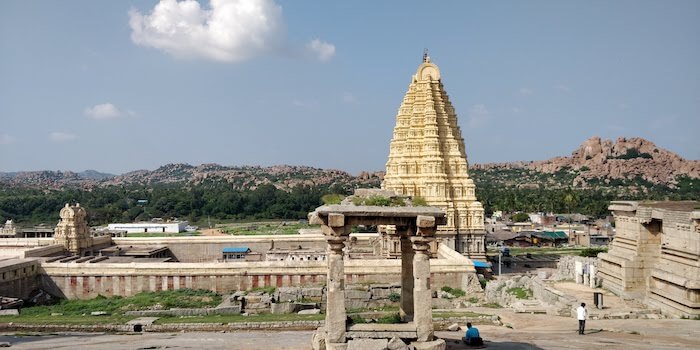
One generally associates temples with concepts like divinity, God, spirituality, and religion. But what do temples have to do with Mathematics? one would ask. However, the fact is that many of India’s great marvels of architecture have been designed using complex mathematical concepts and calculations.
These include the likes of Ranakpur Jain temple, the temples of Khajuraho, Jaipur’s Jantar Mantar, Virupaksha temple of Hampi, and many others. Principles of various disciplines of mathematics including Algebra, Geometry, and Trignometry, have been used for designing these wonderful structures.
The Virupaksha temple in Hampi is one that not only has exquisite craftsmanship and aesthetics but is one whose builders have used complex principles of mathematics and engineering in its design.
Virupaksha Temple And The Use Of Fractals
What are fractals? You must be wondering. In the simplest of terms, fractals are geometric patterns that are created by repeating the same process again and again, but with different scales.
According to the Encyclopedia Britannica, “fractal, in mathematics, any of a class of complex geometric shapes that commonly have “fractional dimension,” a concept first introduced by the mathematician Felix Hausdorff in 1918.
It is amazing to note that the concept of fractals has been used in the design of the Virupaksha temple in Hampi as early as the 15th century, which is hundreds of years before the concept was introduced to the world!
The main Gopuram or the tower of the Virupaksha Temple which towers to a height of about 50 metres is made up of 9 tiers, and as you gaze up at the structure, you can see the fractal design incorporated into its design. The pattern can be seen repeated with different scales every time.
Hampi Virupaksha Temple And Fibonacci Geometry
The Fibonacci number sequence is one in which each number is the sum of its two preceding numbers. The sequence is like this; 0,1,1, 2, 3, 5, 8, 13, 21, 34, 55, 89, 144…
The sequence of Fibonacci numbers was introduced to the western world by the Italian mathematician Leonardo Bonacci, also known as Fibonacci at the beginning of the 13th century through his book, Liber Abaci or the book of calculations.
What is really amazing is that this sequence which has been christened Fibonacci numbers was known to Indian mathematicians as early as 200 BC! The great Indian mathematician Pingala has written about it in his works on Sanskrit prosody, which is related to the metre (or Chandas) of ancient Sanskrit verses.
The Fibonacci numbers are used in architecture and design of some of the greatest monuments in the world including the Pyramids of Egypt, and many Gothic structures in Italy like the Santa Maria del Fiore Cathedral in Florence, and the Church of San Nicolo in Pisa.
It is believed that the Fibonacci number sequence has been used in the design of the Virupaksha temple Gopuram in Hampi also. It is one of the earliest applications of this concept of mathematics in temple architecture.
Hampi Virupaksha Temple Inverted Shadow Mystery
The main gopuram or tower of the Hampi Virupaksha Temple is indeed an object of immense fascination. Apart from the use of complex mathematical concepts in its design, the concepts of Physics also seem to contribute to the Virupaksha temple mysteries.
The shadow of the Raj Gopuram or the main tower of the Virupaksha temple in Hampi falls on a wall in the Saalu Mandapa, some 300 feet away. What is amazing about this is that the shadow is inverted. The Hampi Virupaksha temple inverted shadow mystery has generated a lot of interest and fascinated people.
However, what this phenomenon demonstrates is one of the concepts of physics and the fact that light travels in a straight line. This principle is known as the Rectilinear Light theory and is used in the Pinhole Camera. This must be familiar for those who have studied physics, in fact, it is usually a part of the science syllabus in primary school.
Virupaksha Temple Pinhole Camera Effect
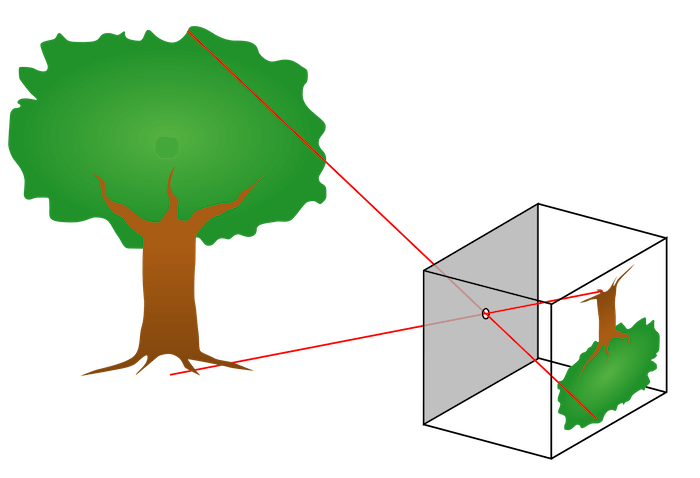
There is a scientific explanation for the inverted shadow of the tower of Virupaksha Temple of Hampi. But what is really astounding is the use of this principle of light on a gigantic scale and that too in the 15th century, at the Virupaksha Temple.
The inverted shadow on the wall of the Saalu Mantapa is due to the effect of what is in essence a giant Pinhole Camera. To understand this, one needs to first understand the workings of a Pinhole Camera.
The Pinhole camera is a very basic camera without a lens. It consists of a light-proof box with a small hole or aperture that is called a pinhole. Light from an object passes through this hole and casts an inverted shadow on the other side. This effect is called Camera Obscura. This is essentially the principle that can be seen in action at the Virupaksha temple in Hampi.

In the case of the Virupaksha temple, a cleverly designed, small opening in the Saalu Mandapa acts as the pinhole or aperture. When light falls on the Gopuram, it travels through the opening in the Saalu Mandapa and casts an inverted shadow on the opposite wall. A classic case of the Camera Obscura effect in action!
Virupaksha Temple Images
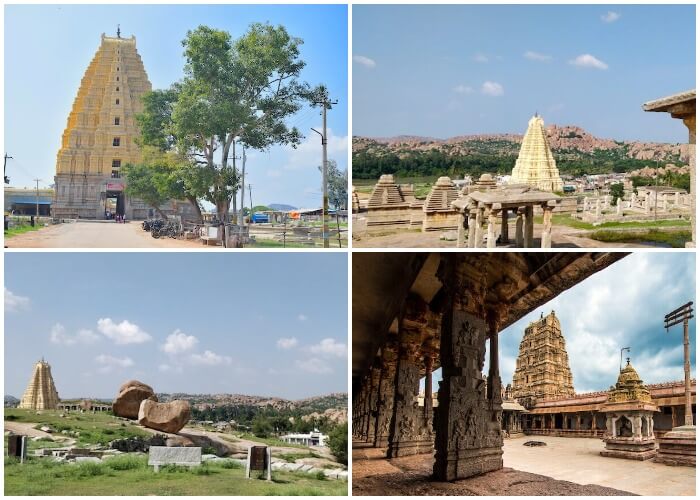
How To Reach Virupaksha Temple | Getting To Hampi
Do you want to witness the fascinating aspects of the Virupaksha Temple? Then you must visit Hampi.
- Hampi is situated in the southern Indian state of Karnataka
- Hampi is about 341 kilometres from the capital of Karnataka, Bangalore
- Hampi is around 12 kilometres from Hospet
- One can reach Hampi, by road, rail, or air
Reaching By Air
The nearest airport to Hampi is the Jindal Vijaynagar Airport at Torangallu at a distance of about 38 kilometres. You can proceed to Hampi by hiring a cab from the airport.
Reaching By Train
The nearest Railway Station to Hampi is Hosapete Junction at a distance of about 13 kilometres. There are trains running to and from places like Bangalore, Hyderabad, Goa, Tirupati, Mysore, etc., that halt at Hospet railway station.
Reaching By Road
Hampi is easily accessible by road from all places in Karnataka. Private and Government buses are available for Hospet and Hampi from Bangalore, and other places. One can also visit Hampi on a road trip.
If you are planning to visit Hampi, you can book a cheap flight right here through TripAdvisor or CheapAir or Cleartrip or Makemytrip or Priceline right here. if you are thinking of a road trip to Hampi from Bangalore or anywhere in India check out the rental car and bus options.
Where To Stay When Visiting Hampi Virupaksha Temple

You can stay in Hampi or Hospet where there are different accommodation options available. If you are travelling by air, you can also stay at the Hyatt Place Hampi, which is very near the airport. Clark’s Inn is a good 3-star hotel in Kamalapura near Hampi. You can also check out the best places to stay in Hampi.

If you want to book any of the above hotels or any of your choice, you can do that right here.
For your Anegundi accommodation, if you are looking for the best hotels in Anegundi to book, you can do that right here. You can book your hotel in Anegundi through TripAdvisor or Cleartrip or Makemytrip or Priceline conveniently right here!
| Click to book the best hotels in Hampi or the best hotels in Anegundi, Karnataka |
|---|
| Click to book the best Airbnb in Hampi and Airbnb in Anegundi |
|---|
| Click to book Hyatt Place Hampi or Clark’s Inn Hampi |
|---|
Mystery of Virupaksha Temple Hampi – FAQ
What is special about Virupaksha Temple?
Virupaksha temple is the oldest living temple in Hampi and its structure has numerous mysteries within it.
What is an inverted shadow?
An inverted shadow shows the object upside down, and this is called Camera Obscura.
Who built Virupaksha Mandir?
Virupaksha Temple was built by a chieftain named Lakkan Dandesha during the reign of the Vijayanagara King Deva Raya II, in the early 15th century.
Isn’t the depth of knowledge possessed by our ancestors simply mind-blowing? The inverted shadow phenomenon of the Virupaksha temple is just one of the amazing and ingenious achievements of the architects and engineers of our ancient temples.
We hope you liked reading this Virupaksha Temple Hampi blog post and found it informative. Please do subscribe to our blog for updated content. If you liked this post, do spread the word, and yes, do follow us on our social media handles.
Below are some useful resources to help you book flights, hotels, and tours! And also clothes, luggage and accessories for your trip!
Flights – TripAdvisor or CheapAir or Cleartrip or Makemytrip or Priceline
Tours – Click here to book top tours around the world
Hotels – Click to book the best hotels/resorts
Choose best stay options with TripAdvisor or Cleartrip or ixigo or Makemytrip or goibibo or Hotelscombined or Priceline
Apparels – Click to buy Menswear or Womenswear or Kidswear
Accessories/Luggage – Click to buy Accessories and Luggage items
Beauty Products – Click to buy Personal Care and Beauty Products
Do You Love Traveling?
Do you want to know how to travel the world? We have put together a very useful travel resources page with the best travel tips. Go check it out now.
Thanks for visiting our site Voyager – imvoyager.com and taking the time to read this post!
If you wish to collaborate/work with us then reach us at [email protected]
We’d love it if you’d comment by sharing your thoughts on this post and share this post on social media and with your friends.
Follow our journey on our social media channels:
Facebook Twitter Instagram Pinterest YouTube
60+ Million Users Trust TripAdvisor With Their Travel Plans. Shouldn’t You?
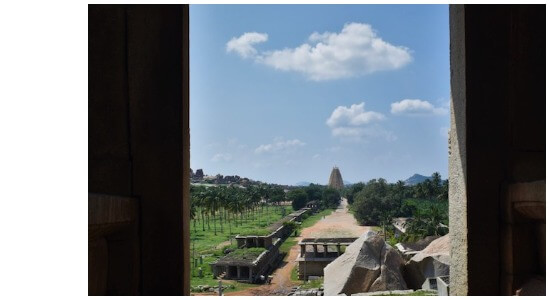
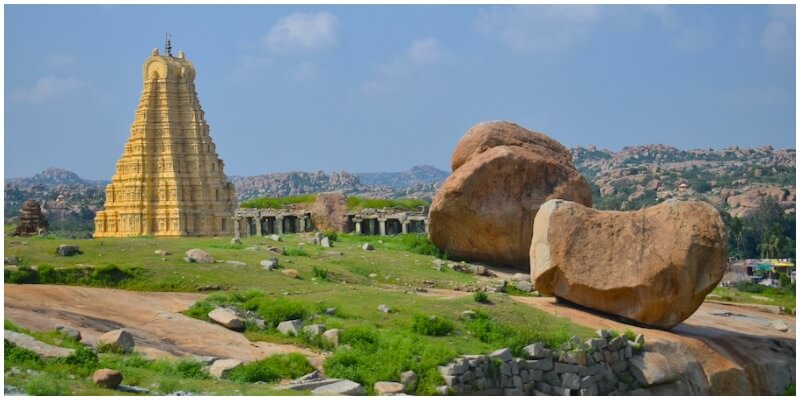

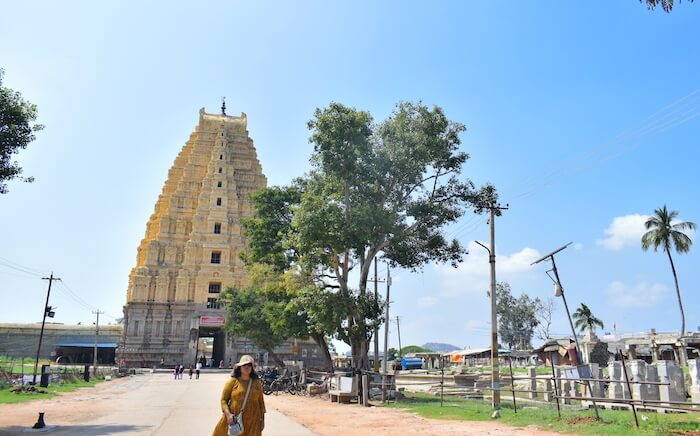
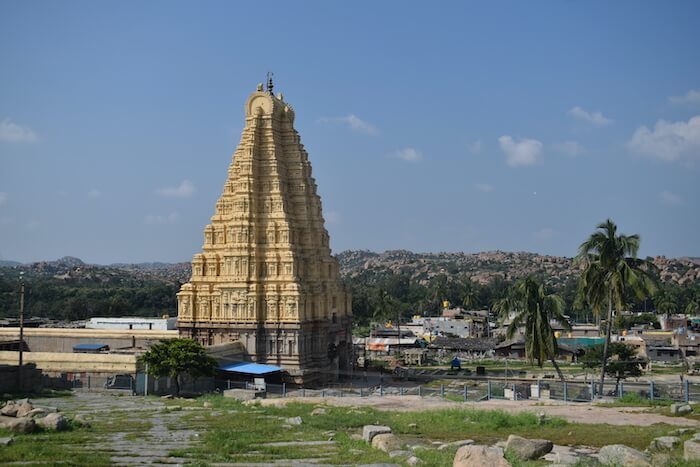
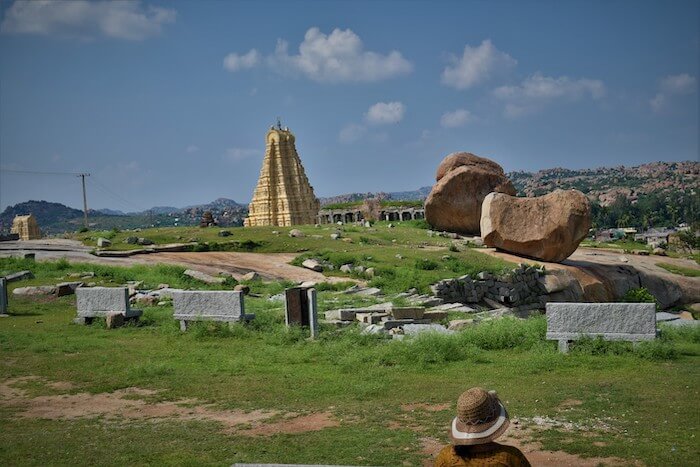
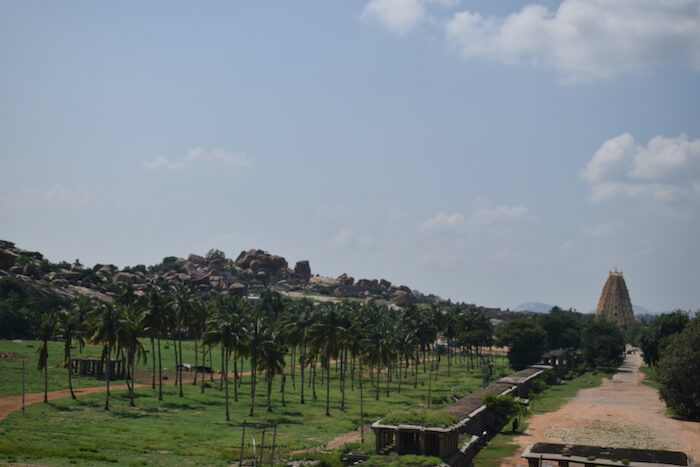
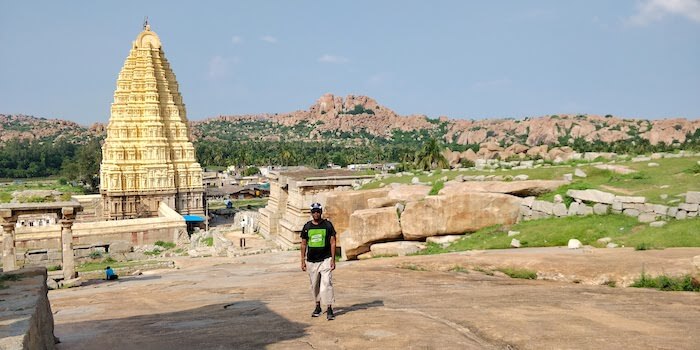

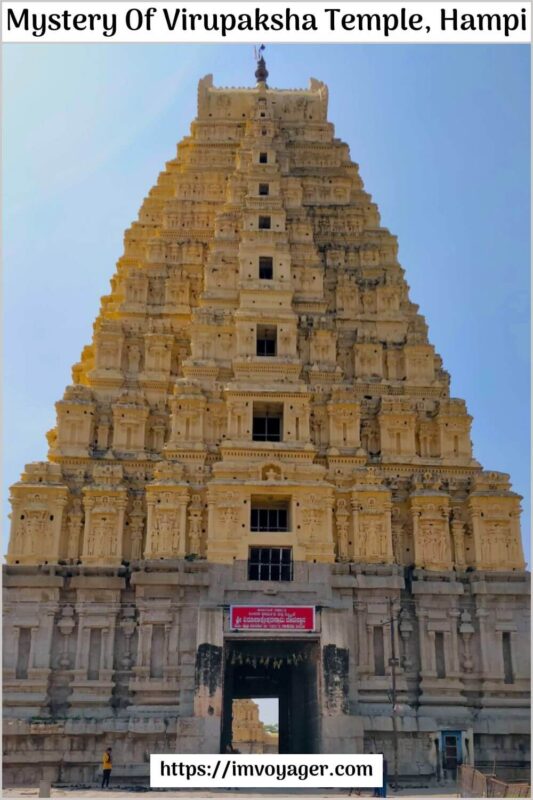




I was not aware of the details of this temple, thanks for such an informative post. I really wish to visit the beauty of this temple.
I had no idea about such shadow mystry about this temple in Hampi. Nice detailing. I eagerly wish to visit this place. Let’s make a plan.
Been to Hampi recently and loved it. It doesn’t just have historical value but it’s beautiful and worth a visit. Thanks for such a detailed review.
It always amazes me how well the calculations were made for ancient temples. Gained lot of inputs from this post about temple and Hampi.
Fractals and fibonacci sequence and other mathematical concepts that the world learnt much later were used in out temples. Amazing, isn’t it? I’m definitely going to visit this temple.
Simply wow. We have known about these concepts through noveks and focumentaries much later, and these ancient temples used such sequences.